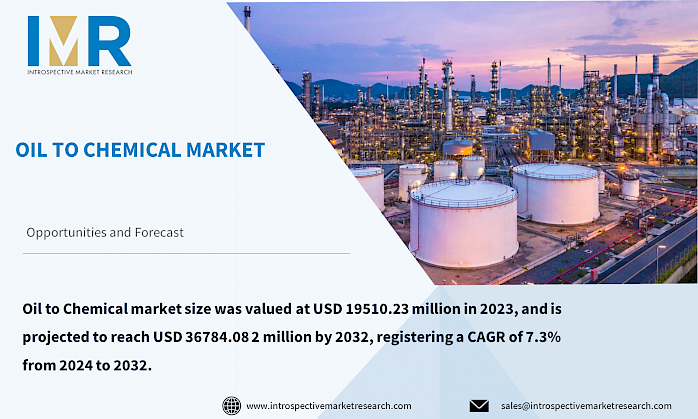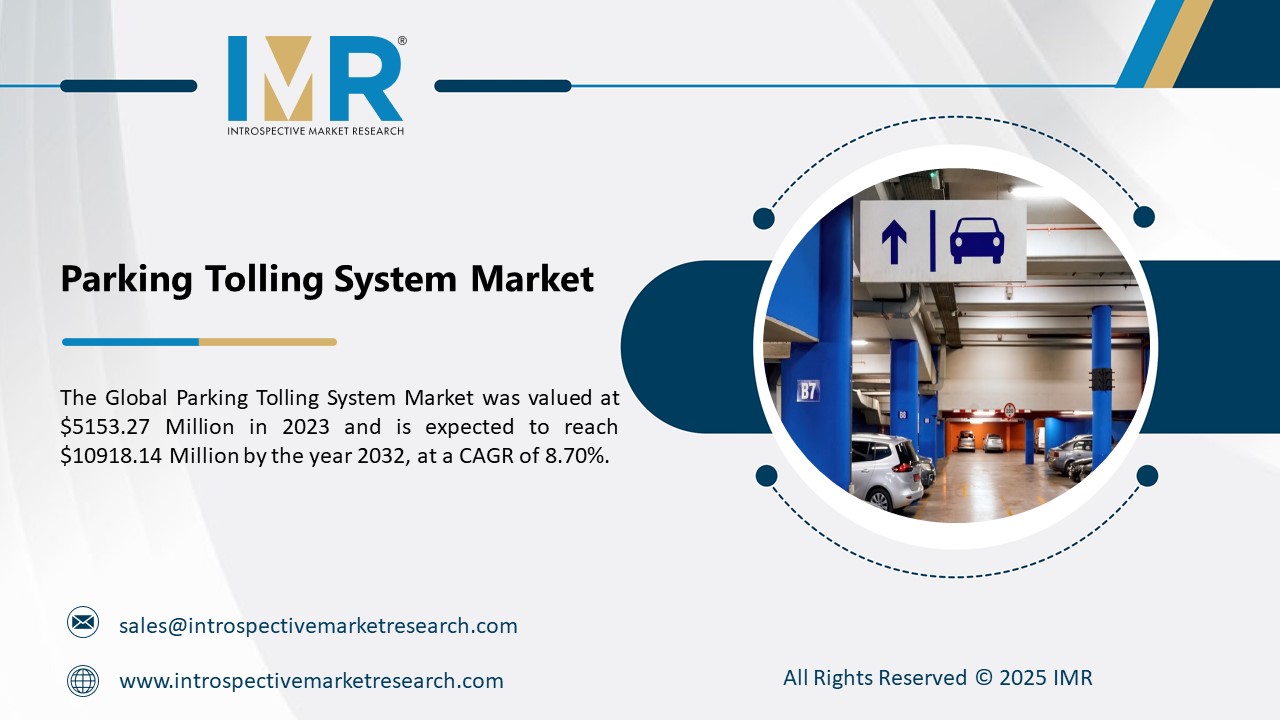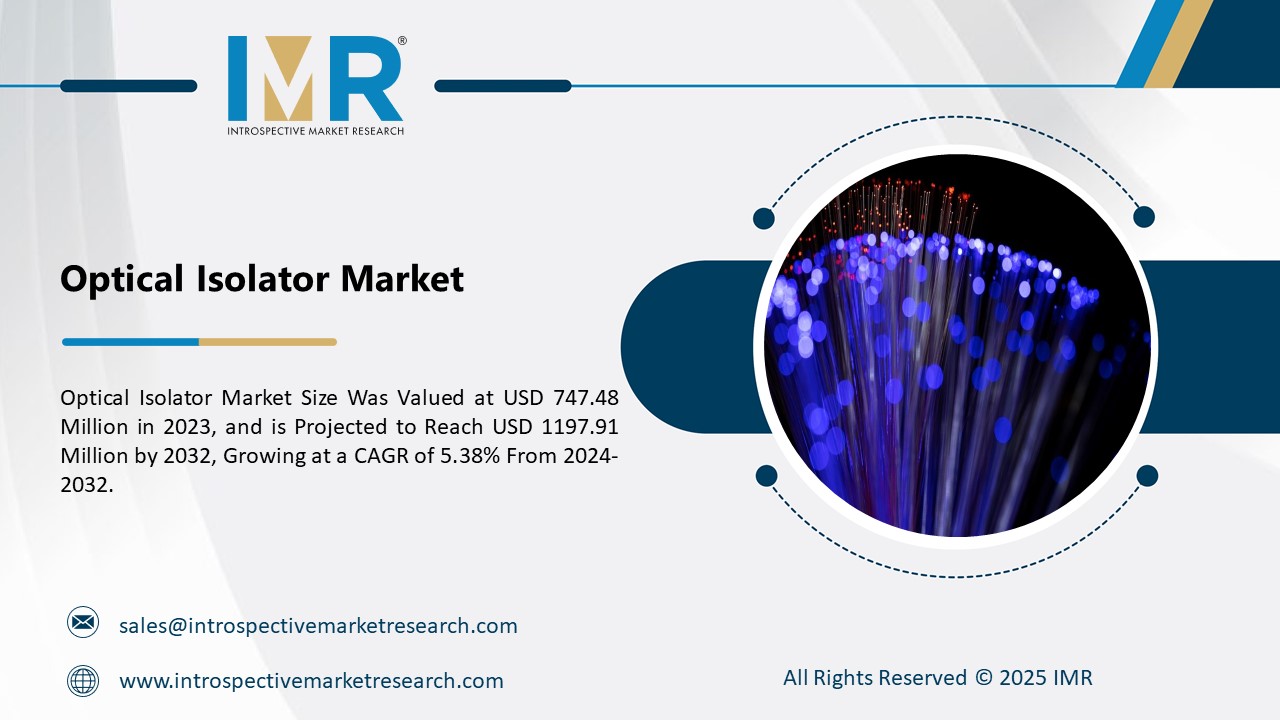Global Oil to Chemical Market
According to a new report published by Introspective Market Research Pvt Ltd, titled, “Oil to Chemical Market by Product Type, Technology, and End-User: Global Opportunity Analysis and Industry Forecast, 2024–2032,”
the Global Oil to Chemical market size was valued at USD 19510.23 million in 2023, and is projected to reach USD 36784.08 2 million by 2032, registering a CAGR of 7.3% from 2024 to 2032.
The oil-to-chemical market in Global has witnessed substantial growth in recent years, driven by factors such as Increasing Demand for Petrochemicals Shell Catalysts & Technologies integrates refinery catalysts with petrochemical technology to process crude oil, optimizing catalyst processing and energy savings in petrochemical operations.
The interconnected O2C sector includes refineries, petrochemical units, logistics, and supply chain infrastructure for transportation fuels, polymers, and biofuels blended with gasoline and diesel. Oil converted into chemicals creates essential components like ethylene and propylene for various products.
The increasing demand for cost-effective and eco-friendly solutions in the manufacture of products. One of the key drivers is the Increasing Demand for Petrochemicals. Crude oil is used to make petrochemical products and petroleum components. Petrochemicals are used to create a wide range of products, from everyday items to luxury goods. They are also used in the production of plastic bottles, polyester-based items like cassettes and CDs, dyes, ink, detergents, waxes for candles and polishes, food preservatives, vitamins, and sneakers with rubber soles.
The emergence of Advancement in Process Technologies presents a significant opportunity for the Global Oil to Chemical market. Advanced process technologies improve efficiency in converting feedstocks into chemicals using enhanced catalysts, reactors, and separation methods. This leads to higher conversion efficiencies, yields, and lower energy usage, enhancing operational efficiency and cost-effectiveness. It also allows for a wider range of valuable chemicals, improved purity, and efficiency, while promoting environmental sustainability through reduced emissions and waste generation. Integration with digitalization and automation offers further benefits like real-time surveillance and enhanced product quality.
Global Oil to Chemical Market, Segmentation
The Oil to Chemical market is segmented based on Product Type, Technology, and End-User, and region.
Commodity Chemicals:
Commodity chemicals like ethylene, propylene, benzene, and methanol are essential building blocks for various industries like plastics, textiles, and automotive. Produced in large quantities with efficient manufacturing processes, they maintain a leading market position.
Cost-effective methods attract manufacturers, making them crucial for producing everyday products. The growing demand for these chemicals in emerging economies, driven by industrialization and urbanization, establishes the main market demand.
Packaging Segment:
In the Global oil-to-chemical market Packaging Segment represents a popular and practical solution for Food packaging. Food packaging chemicals act as a barrier to protect food from environmental factors, increasing shelf-life and safety during transport and storage. Oil can be used in packaging through various methods, including encapsulation technologies.
Packaging materials like plastics are made from petrochemicals, with costs dependent on crude oil and natural gas prices. These materials are also used to create eco-friendly polymers to address environmental issues.
Region:
The Region analysis of the Global Oil to Chemical market highlights the dominance of Asia Pacific where Oil to Chemical services is prevalent. Among these countries like China, India, Japan, and South Korea have seen a rise in demand for petrochemical products in sectors such as automotive, construction, packaging, textiles, and consumer goods. They are investing in new refineries and expanding existing ones to meet the growing need. Government incentives promote technology investment and integration of refining and petrochemical industries for efficient production.
Some of The Active Market Players Are-
- Saudi Aramco (Saudi Arabia)
- E7.3onmobil (USA)
- Royal Dutch Shell (Netherlands)
- BP (UK)
- Sinopec (China)
- Totalenergies (France)
- Chevron (USA)
- Basf (Germany)
- Dow Chemical (USA)
- LyondellBasell Industries (USA)
- Reliance Industries (India)
- Sabic (Saudi Arabia)
- Ineos (UK), and Other Active Players.
Key Industry Developments
- In April 2024, Haldia Petrochemicals Ltd (HPL) Plans to build a $10 billion Oil-to-Chemical Project in South India capable of producing 3.5 million metric tons per year (TPY) of ethylene and propylene, at Cuddalore in Tamil Nadu by 2028 to 2029 said by CEO Navanit Narayan of Haldia.
- In October 2023, ICIS, a global source of commodity intelligence, announced the launch of its Pyrolysis Oil Pricing Indexes to satisfy the increasing consumer demand for the pricing of chemical recycling outputs. The mixed plastic waste pricing service currently includes the key feedstocks for pyrolysis oil – mixed polyolefin bales and high plastic content refuse-derived fuel bales.
Key Findings of the Study
- Global Oil to Chemical market growth driven by Increasing Demand for Petrochemicals.
- Advancement in Process Technologies offers a significant opportunity for conversion of feedstocks into chemicals.
- The Commodity chemicals have a wide range of applications in various industries, such as plastics, rubber, textiles, automotive, construction, and many others.
- The Packaging materials such as plastics, polyethylene terephthalate (PET), and polypropylene (PP), are made from petrochemicals.








